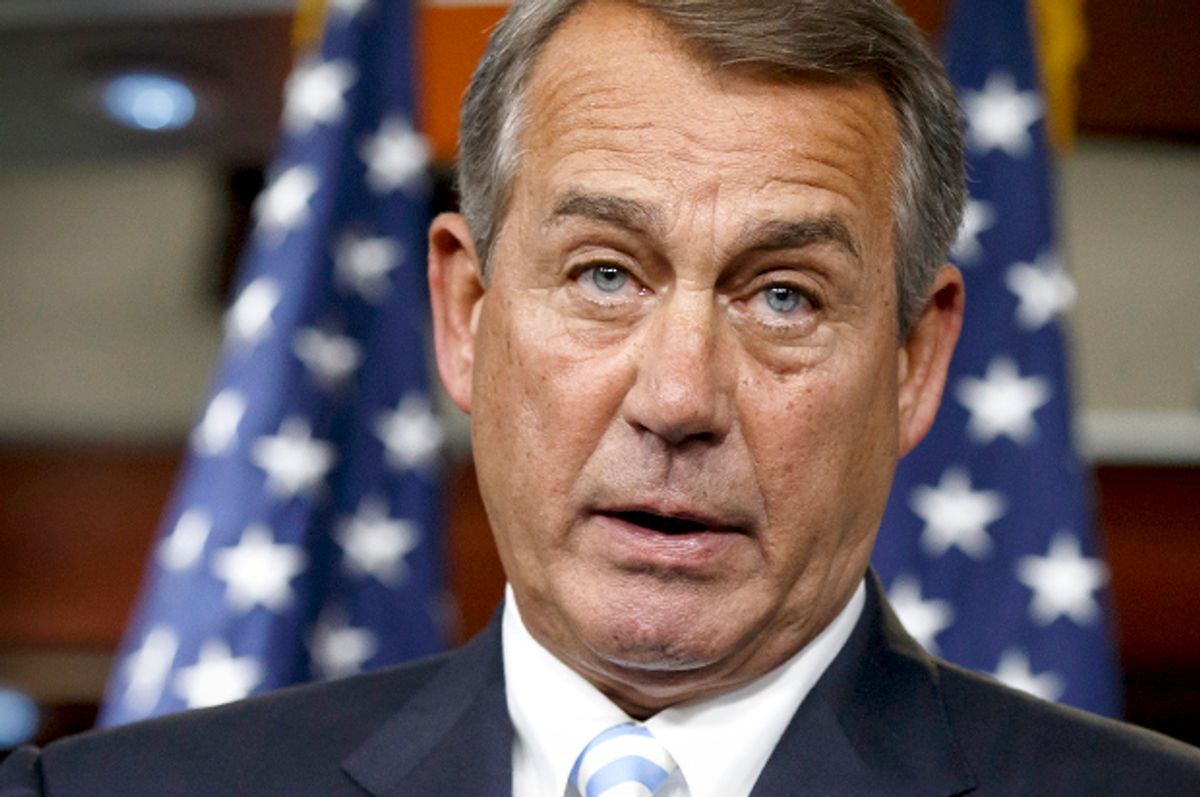In 2012, Democratic candidates for the House of Representatives received more votes overall than Republican candidates, but thanks to the way congressional districts were configured, the GOP maintained its House majority. This year was a bit different: Not only did House Republicans win their largest majority in eight decades, but GOP congressional candidates received a majority of the national popular vote. But while the GOP will hold 57 percent of House seats in the 114th Congress, the party's candidates received only 52 percent of the vote on Election Day -- and gerrymandering isn't the only reason for the discrepancy.
In an extensive new analysis for Nate Silver's FiveThirtyEight.com, the Cook Political Report's David Wasserman examines the phenomenon of "orphan states," which goes a long way toward explaining the GOP's disproportionate share of House seats. Orphan states are states where there isn't a competitive gubernatorial or Senate contest on the ballot. This year, Wasserman notes, 24 states featured fiercely contested statewide races, while 26 were orphan states. In the former group, the number of raw votes cast was down by about 30.5 percent compared with 2012, while the latter group witnessed an even larger 43.9 percent decline.
This spelled doom for House Democrats like Nevada's Steve Horsford, who went down to defeat in his race against GOP state legislator Cresent Hardy. "With GOP Gov. Brian Sandoval cruising to re-election and no Senate race on the ballot, there was little reason for Democrats to show up," Wasserman writes. Accordingly, Horsford received more than 120,000 fewer votes than he did two years ago, losing his seat by a 3-point margin.
Similarly, in New York -- where there was no Senate race and Democratic Gov. Andrew Cuomo never faced any real danger of losing reelection -- there was a substantial drop-off in voter turnout, which led Democrats like Louise Slaughter to win by far closer margins than expected and contributed to the defeats of Reps. Tim Bishop and Dan Maffei. An additional, albeit smaller factor may have been at play in the state: Cuomo's conservative economic policies have alienated many Democrats, and some progressives may have chosen to stay home, rather than hold their noses and vote for the governor.
Read Wasserman's analysis here.

Shares